Nothing says summer to me like a good wild blueberry pie. Just thinking about it brings me back to sunny summer days foraging wild blueberries in the pine barrens.

Wild vs cultivated or frozen
Not all blueberries are created equal, and the ones you choose will make a difference in the finished product.
Fresh
Fresh, truly wild blueberries that have never seen a freezer will be at their peak of flavor. These are the best.
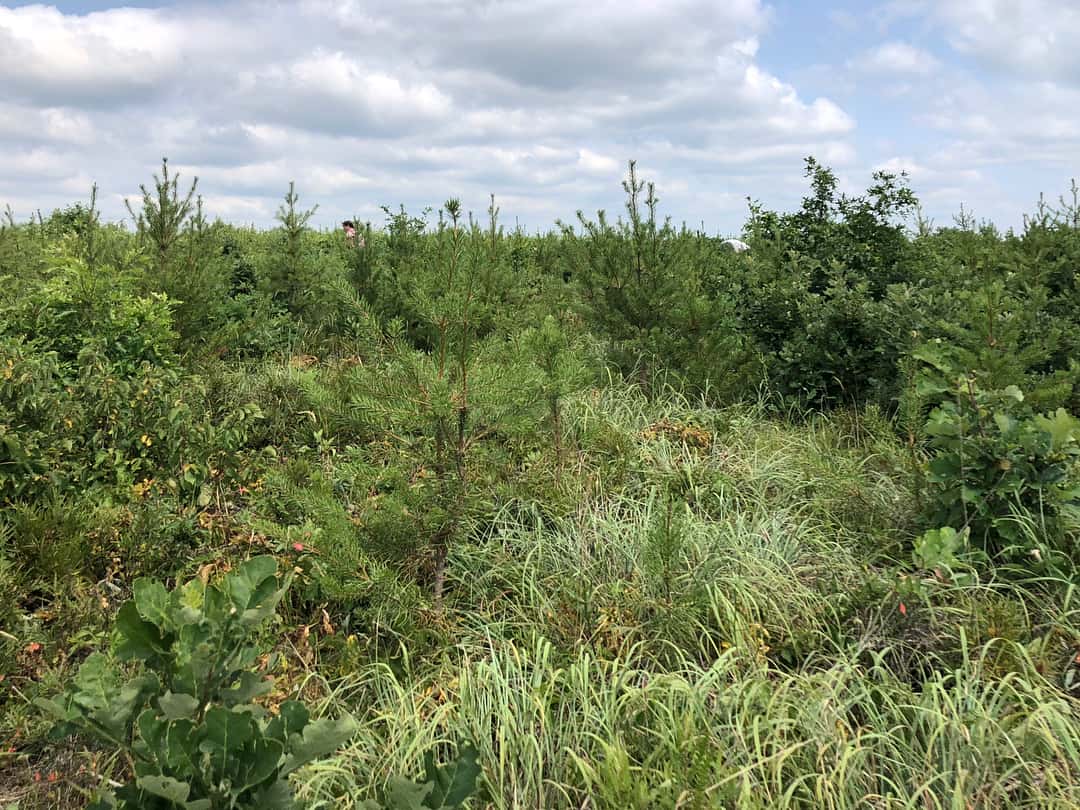
Cultivated
Cultivated blueberries are much larger than wild blueberries and contain more water. They'll work here, but they're not the same as wild.
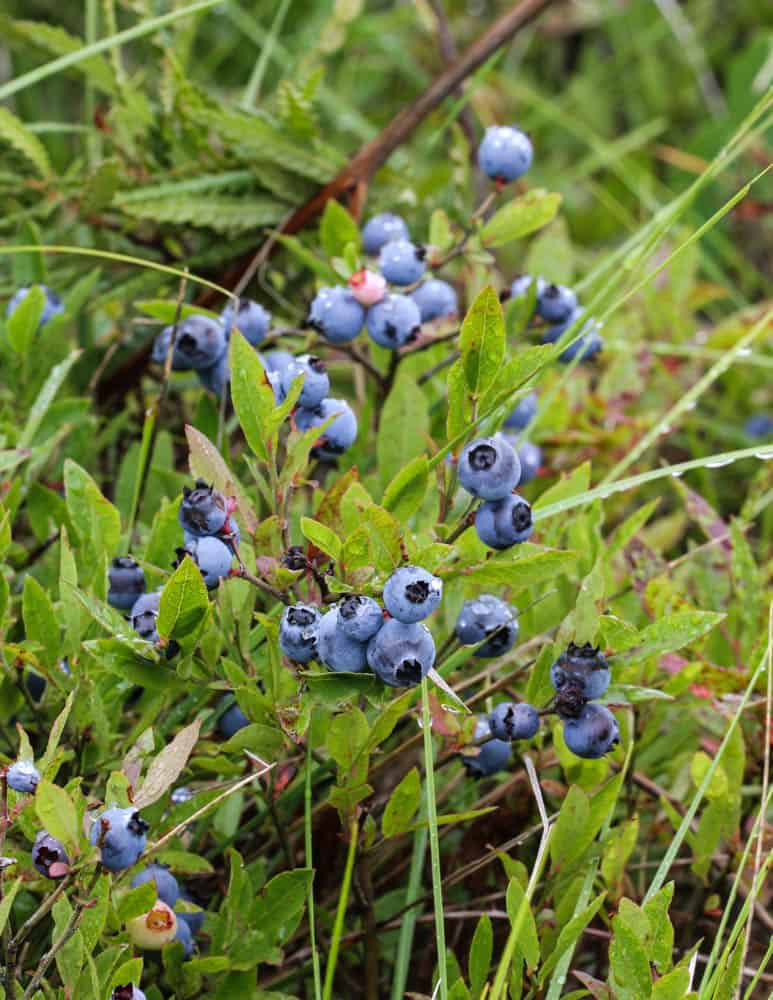
Frozen Wild Blueberries
When I noticed some of my restaurant suppliers sold frozen wild blueberries I was excited to try them. unfortunately frozen wild blueberries don't taste as good as fresh ones.
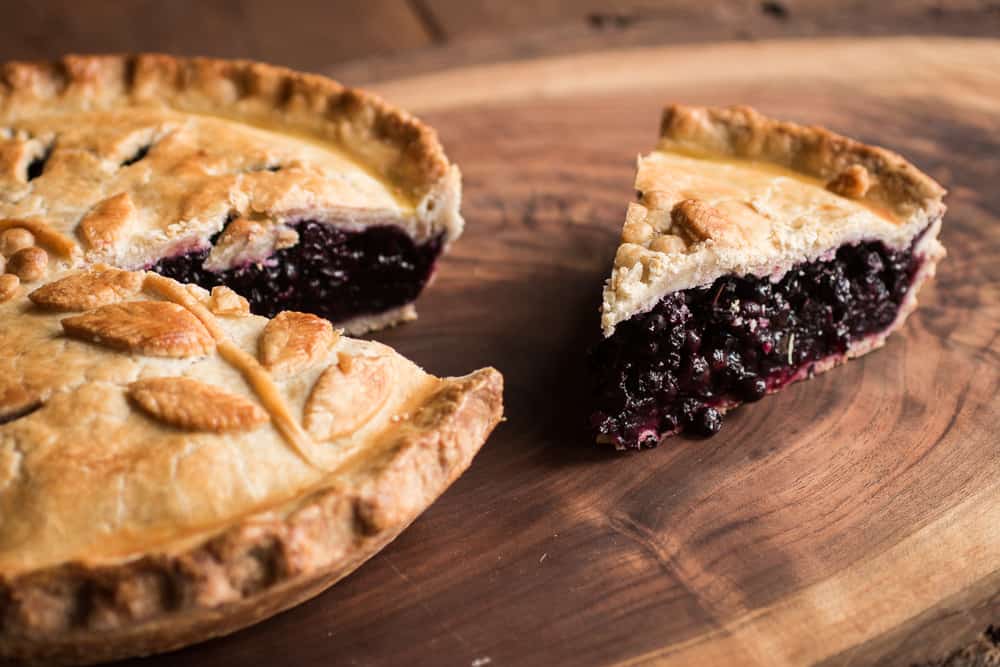
After speaking with experts, the consensus is the management practices of wild blueberries like Wyman's leads to them lack flavor.
Why it happens we don't exactly know. They'll work in a pinch, and they'll still taste good. But, if you have access to fresh, wild blueberries you should go out of your way to find them.
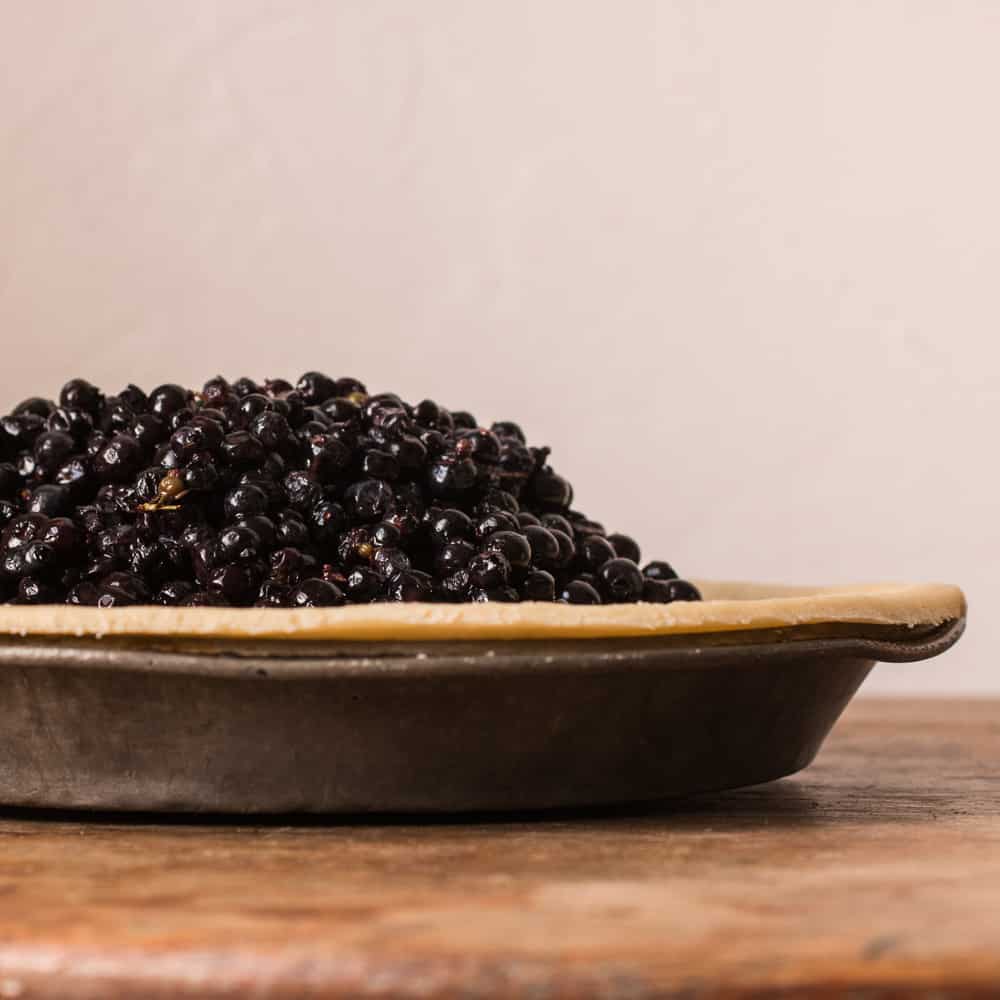
Maple Sugar
Maple sugar is optional, but there's nothing like the deep flavor it gives to pies and baked goods.
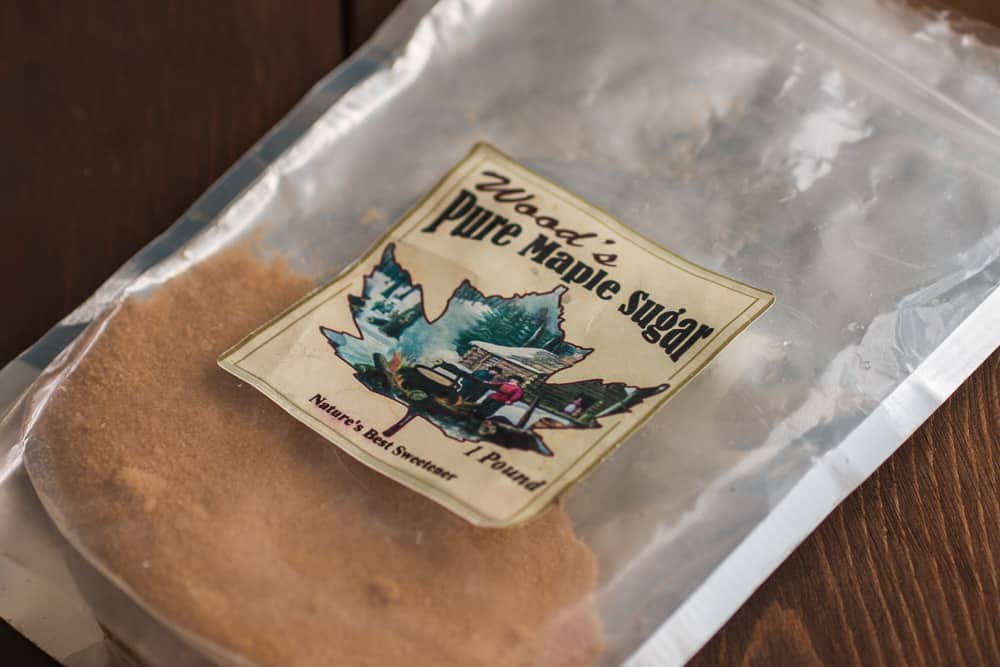
Crimping the pie crust
The edges of my first wild blueberry pie were not properly crimped. Make sure to crimp your edges so the filing doesnt come out while it bakes. If the filling comes out it can soften your crust and give it an amatuer look.
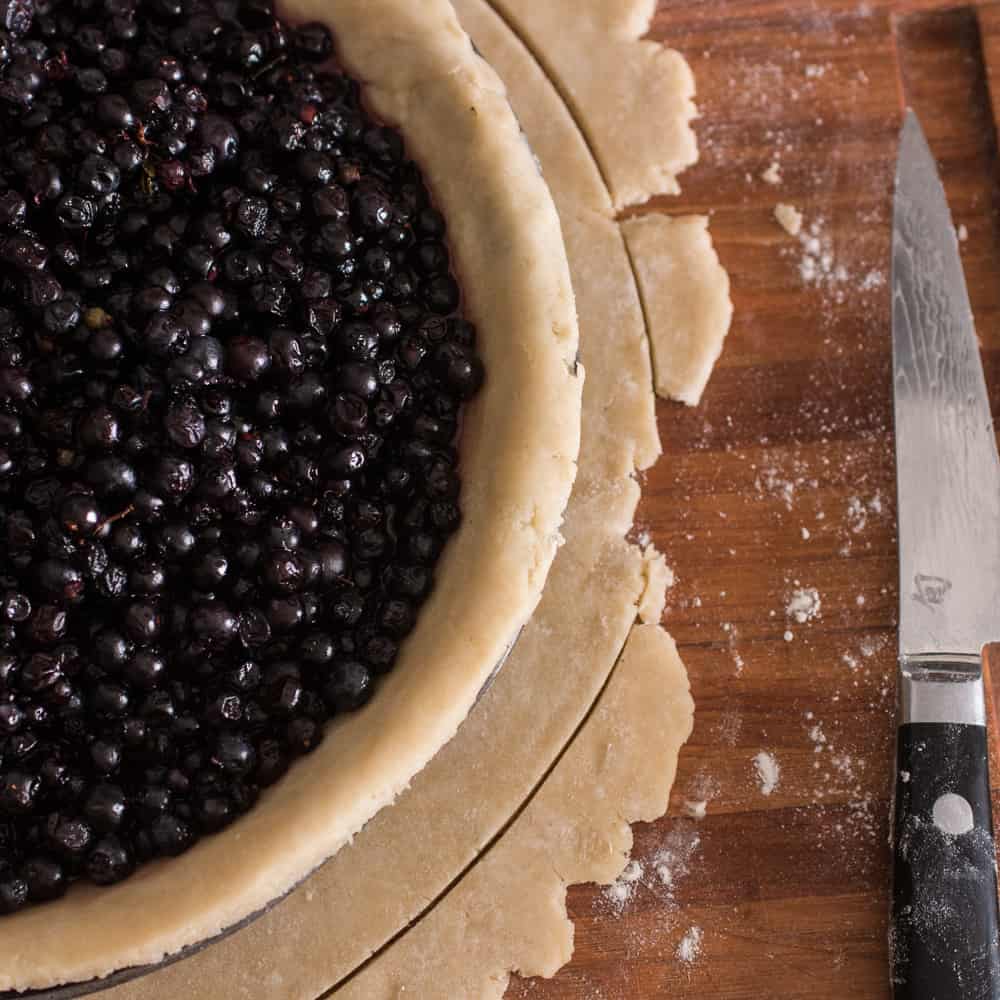
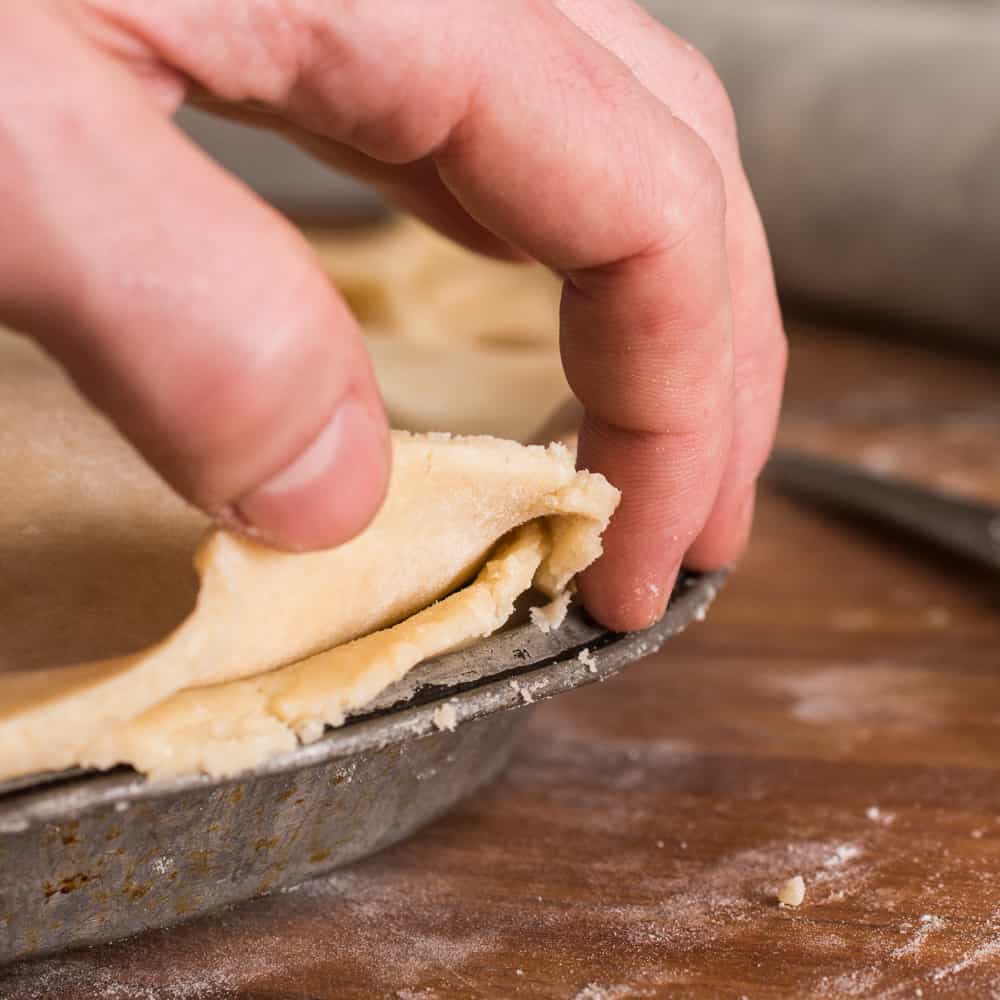
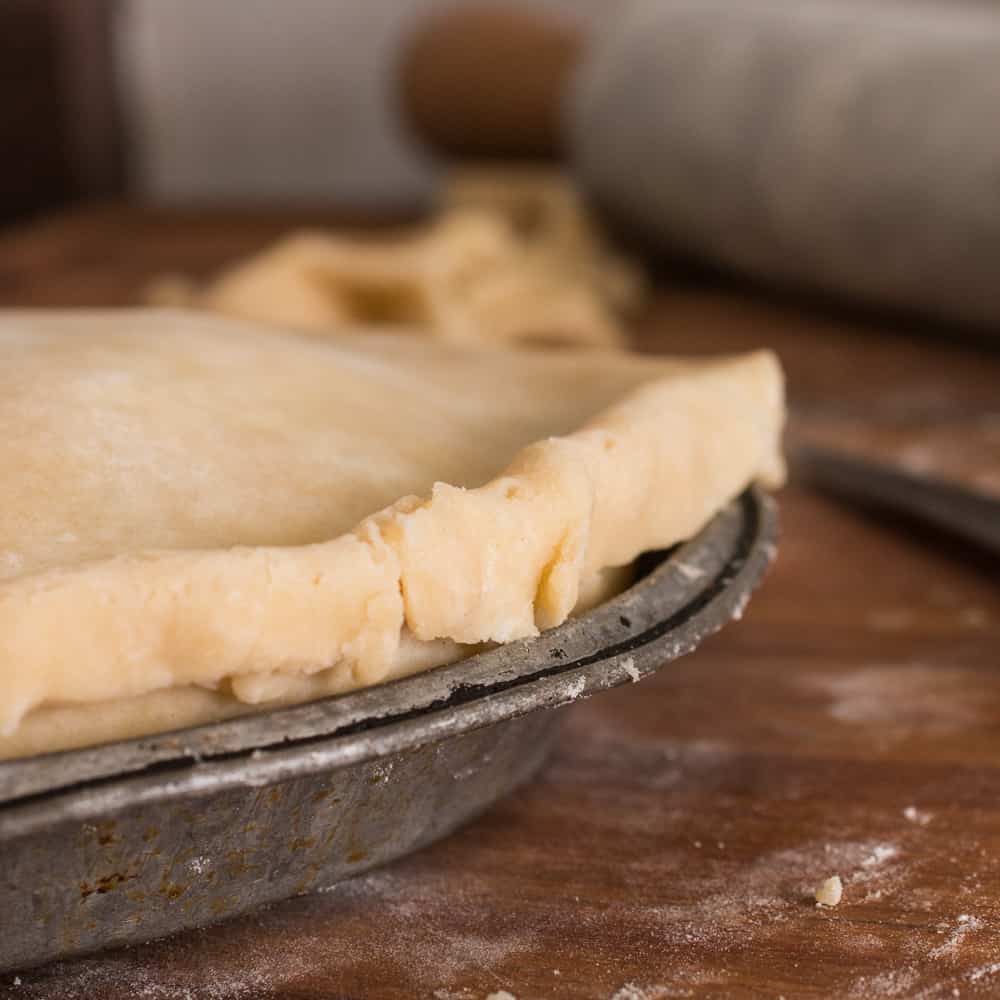
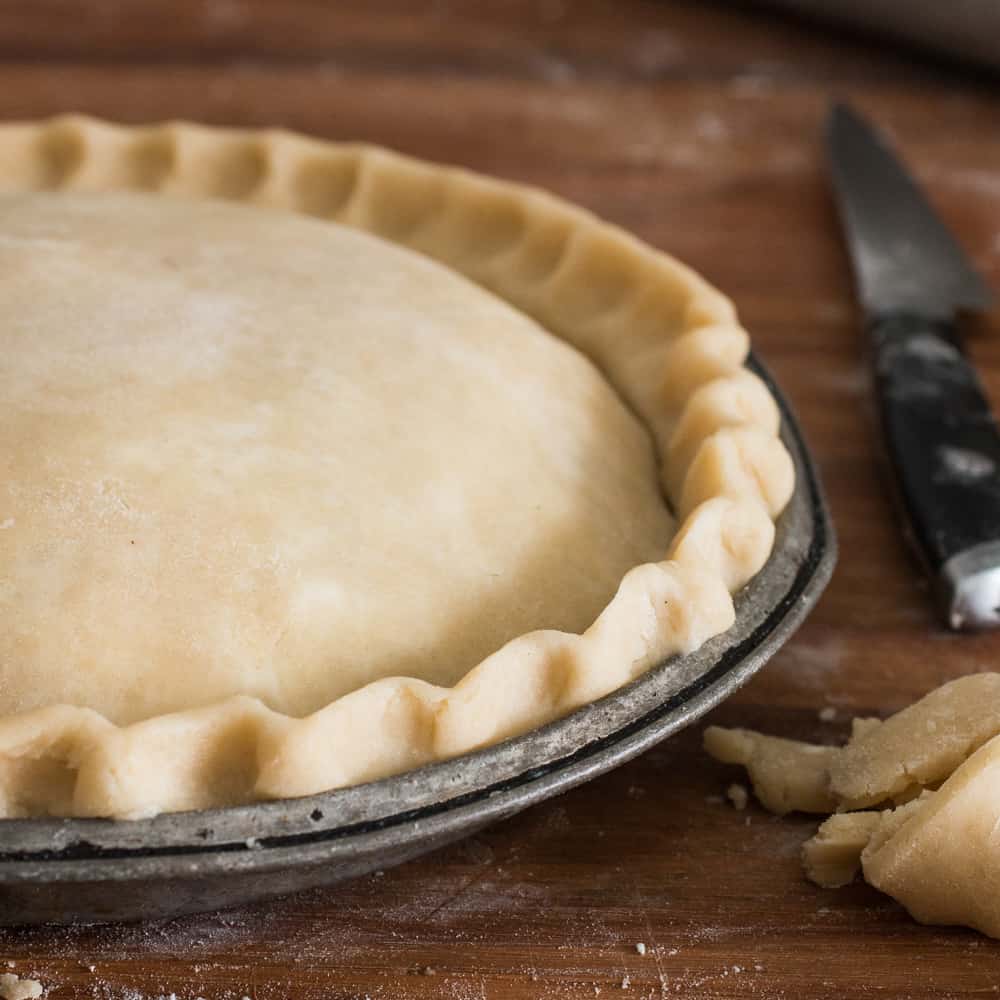
My second time making it I got some advice from a baker. I made the top crust a little larger than the bottom, folding the crusts together. It worked like a charm.
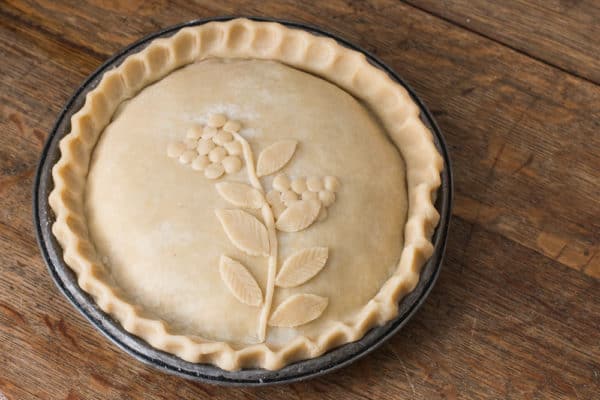
Decorating
If I have time, I'll decorate the top crust with images of the fruit in the pie. This is optional but it looks nice.

I love pie, but sometimes I'm in the mood to make a simple dessert. If you have a smaller amount of blueberries, try my English Cream Sauce for Berries with Amaretti, or Wild Blueberries with Creme Fraiche.
Wild Blueberry-Maple Sugar Pie
Equipment
- 1 9 inch pie pan
Ingredients
- 7 cups frozen or fresh wild blueberries
- ¼ cup cornstarch or an equivalent, like acorn starch
- ½ cup maple sugar or substitute brown sugar
- ½ teaspoon cinnamon or a combination of warm spices like pumpkin pie spice or baharat
- 1.5 Tablespoons fresh lemon juice
- Ten scrapes of fresh lemon zest
- 1 whole egg beaten very well without water, for brushing the crust
Pie Crust
- 2 cups all purpose flour
- 1 teaspoon kosher salt omit this if you use salted butter
- 1 tablespoon granulated sugar
- 2 sticks unsalted butter cold
- ½ cup full fat sour cream do not use low fat sour cream
Instructions
Crust
- Cut the butter into cubes and mix with the flour, salt and sugar in a food processor. Pulse until it looks like coarse meal, then remove to a large bowl and add the sour cream.
- Mix the sour cream in with a fork, then work with your hands to make a smooth dough.
- On a lightly floured surface, divide the dough into two balls and flatten them into round disks. warp each disk in plastic wrap and refrigerate until needed.
Filling
- Toss the blueberries, sugar, lemon zest, and cornstarch. Allow to macerate for 15 minutes.
- Roll out the top and bottom crust. Put the bottom crust in the pie plate. The crust should hang over the edges a bit. Put the filling in.
- Top with the lid, crimp the edges well, cut a few slits in the top crust for steam. Decorate with cut out pieces of dough if desired. Brush cut pieces of dough with water to help them stick.
Baking
- Preheat the oven to 375 F. Brush the top crust with the egg wash. Bake on a low rack of the oven for 45-60 minutes, or until the filling is bubbling and the crust is golden brown.
- Allow the pie to cool for 20 minutes before serving. From here the pie will last in the fridge for 5 days. It can also be frozen whole, then thawed and served if you want to make it ahead. If baking ahead, make sure to bring the pie to room temperature or warm in an oven before serving.
- Serve with whipped cream or vanilla ice cream.
Notes
Temperature
Some recipes will preheat and oven to 400 F. I recommend 375 F. If you need to cook it longer, put some aluminum foil around the edges to prevent them from getting too dark.Nutrition
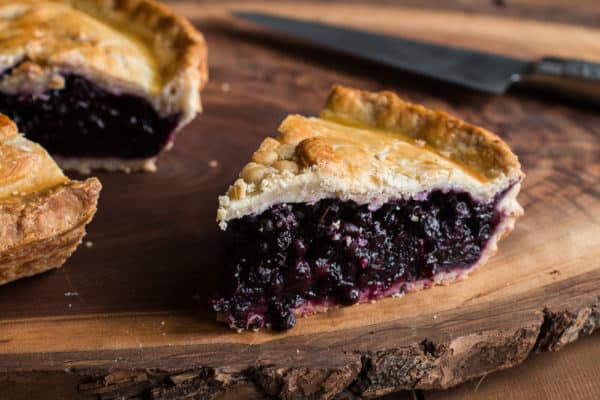

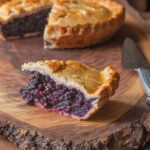
Linda
This looks delicious! Maple sugar, inspired. My only change would be to substitute quick acting tapioca for conrnstarch. Once I started using tapioca for pies, I never looked back, and don’t use cornstarch anymore.